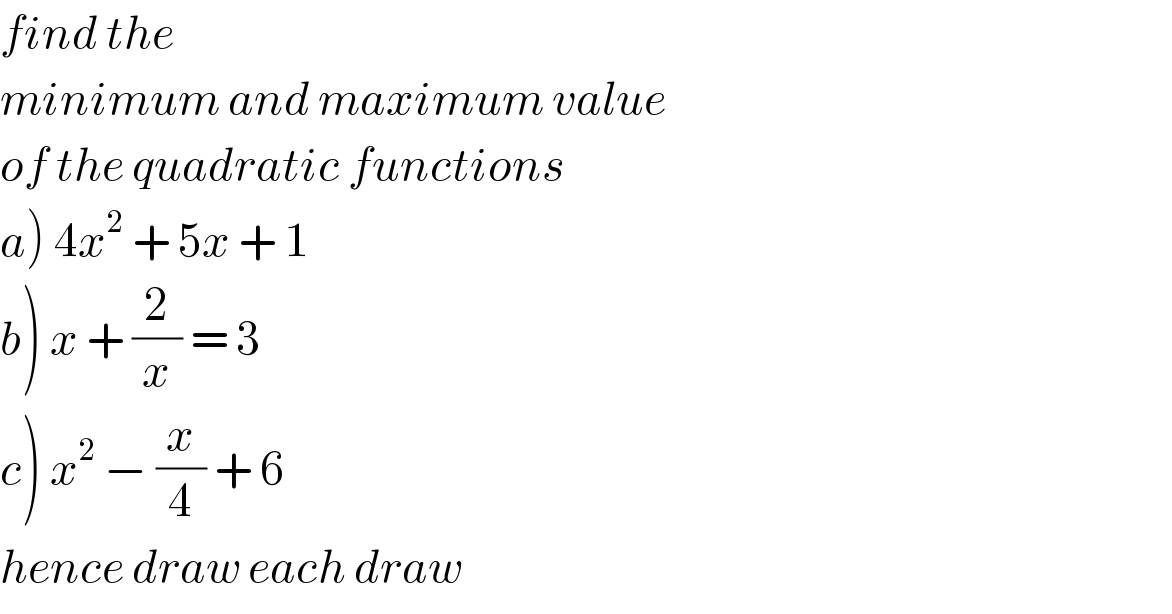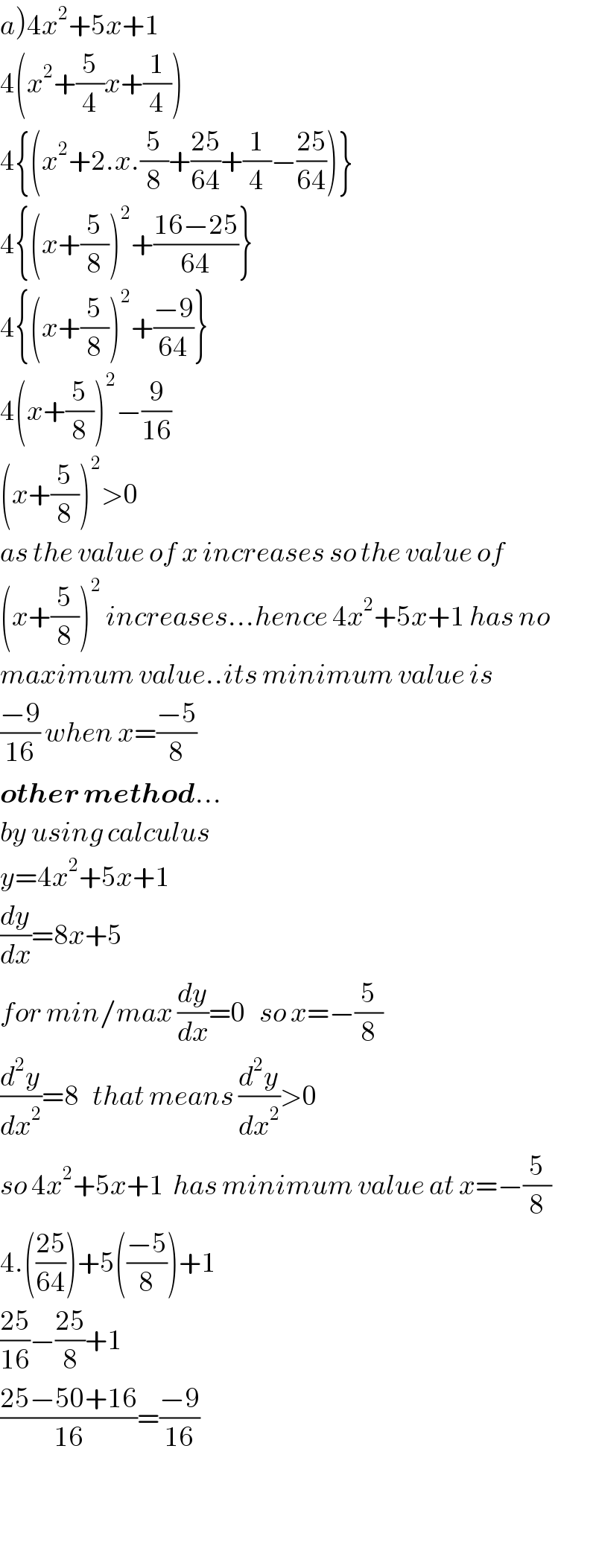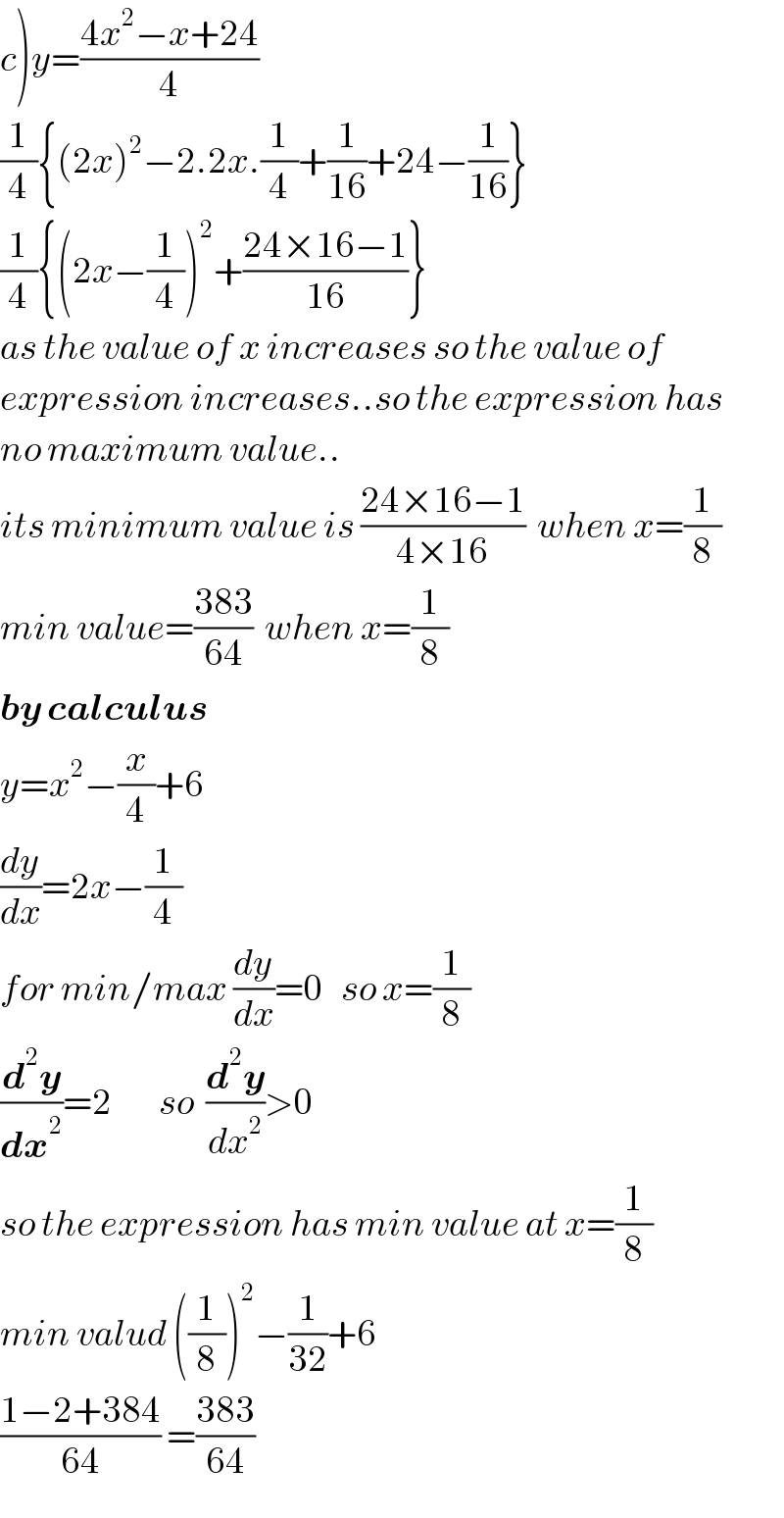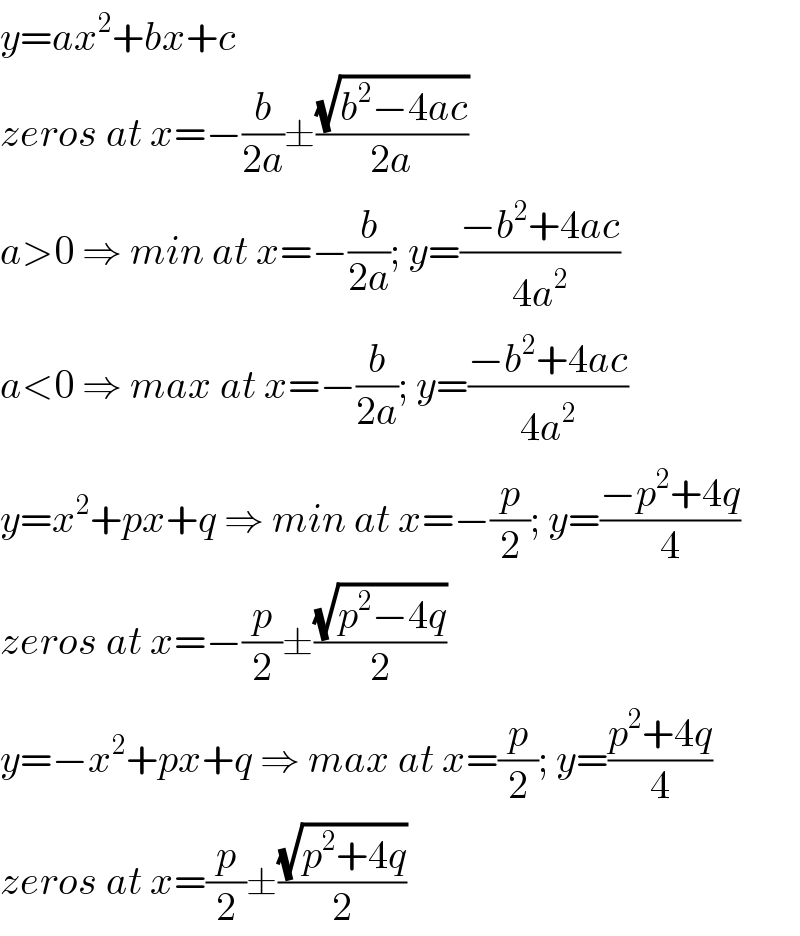
Question and Answers Forum
Question Number 39607 by Rio Mike last updated on 08/Jul/18

Answered by tanmay.chaudhury50@gmail.com last updated on 08/Jul/18

Answered by tanmay.chaudhury50@gmail.com last updated on 08/Jul/18

Answered by MJS last updated on 08/Jul/18

